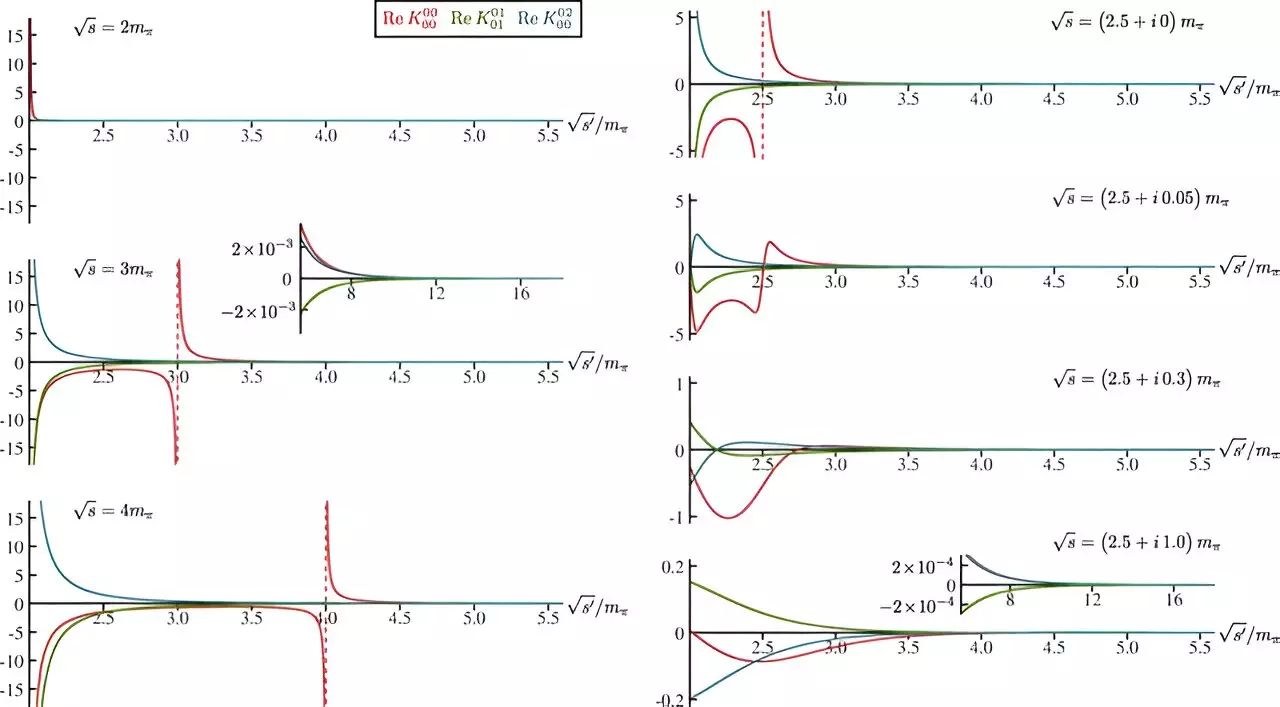At the core of nuclear physics lies the powerful and complex strong interaction, a force that binds the very particles that constitute our universe. While significant strides have been made in revealing the mysteries surrounding this fundamental force, there remains a wealth of knowledge yet to be discovered. Recently, groundbreaking findings published in *Physical Review D* by researchers from the Center for Theoretical and Computational Physics at the U.S. Department of Energy’s Thomas Jefferson National Accelerator Facility have unveiled intriguing details about the sigma meson, a particle that plays a vital role in the mechanics of the strong interaction.
The sigma meson, akin to the more well-known protons and neutrons, is composed of quarks and emerges when two pion particles collide. In a dazzling display of quantum behavior, the quarks from these pions can momentarily rearrange themselves into the ephemeral sigma meson. However, its fleeting existence—decaying back into pairs of pions within a remarkably short time—poses considerable challenges for experimental physicists striving to study its properties. The sigma’s very nature as an unstable particle renders traditional experimental methods inadequate for reliable observations.
The Unconventional Research Approach
To tackle the challenges associated with studying the sigma meson, a trio of physicists—Jozef Dudek, Arkaitz Rodas Bilbao, and Robert Edwards—prescribed a novel solution: supercomputing. Their pursuit is not simply an effort to assess the sigma meson in isolation; it is a fundamental inquiry into the framework of matter that constructs our physical reality. The sigma meson is significant; with a mass roughly half that of a proton, it is among the lightest unstable particles governed by the strong force. By scrutinizing this particle, physicists aim to shed light on the deeper mechanics of how particles form and sustain the universe.
Supercomputers have the advantage of performing intricate calculations at lightning speed, facilitating complex simulations that would otherwise take a solitary personal computer hundreds to thousands of years to complete. Rodas Bilbao, alluding to the urgent nature of their work, humorously stated the necessity of this technology in ensuring he would still be around to see the project’s conclusion. By engaging supercomputers located at Jefferson Lab and Oak Ridge National Laboratory, the team simulated pion-pion collisions to probe the sigma meson’s manifold intricacies, relying on the principles laid out by quantum chromodynamics (QCD).
The Technical Burden and Collaborative Spirits
Despite the promise that supercomputing holds, the challenge remains daunting: QCD is notoriously difficult to solve using straightforward algebraic methods. The team, with the proficiency exhibited by Rodas Bilbao in implementing mathematical constraints known as dispersion relations, innovatively sought to reintroduce these principles into their computations. This technical hurdle necessitated collaborating with two seasoned scientists, Dudek and Edwards, each bringing a wealth of knowledge in QCD numerical calculations and integration of computational techniques.
Dudek aptly describes the ethos that propelled this collaboration: leveraging distinct expertise to overcome obstacles that none of them could surmount individually. Their initiative embodies the very essence of scientific inquiry, where the confluence of diverse skill sets converges to address complex problems. Moreover, their work exemplifies the connections cultivated through programs like the Exotic Hadron (ExoHad) Topical Collaboration, aimed at investigating particles that elude standard classification, including the sigma meson.
Pioneering Future Directions in Particle Physics
The findings related to the sigma meson signal a promising avenue for exploring other enigmatic particles such as the kappa. Formed during interactions between pions and kaons, the kappa remains even less understood than the sigma. The researchers’ techniques, honed through their exploration of the sigma, provide a pathway to deeper examinations of this particle and others that linger on the edge of theoretical physics.
However, the complexity intensifies as the internal structures of these particles are evaluated further. The sigma meson’s properties must be scrutinized with unprecedented accuracy, necessitating a ways back to adjust the models closer to the authentic masses of quarks and pions. This meticulous calibration emphasizes the mutual reliance between theoretical physicists and experimentalists; as the researchers from Jefferson Lab assert, their work provides critical insights that inform experimental strategies.
Through pioneering approaches combining theoretical acumen with cutting-edge computational power, these physicists are not merely contributing to the academic world; they are forging the future of nuclear physics. Their exploration of the sigma meson—though just one facet of the broader enigmatic strong interaction—carries profound implications for comprehending not only the essence of matter but, ultimately, the very nature of existence itself.

